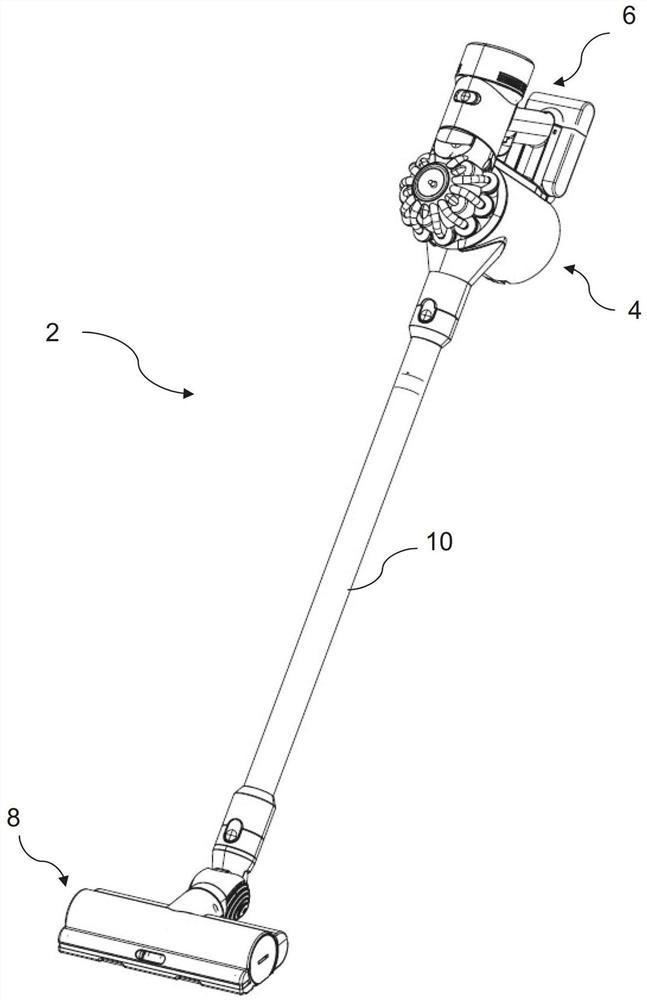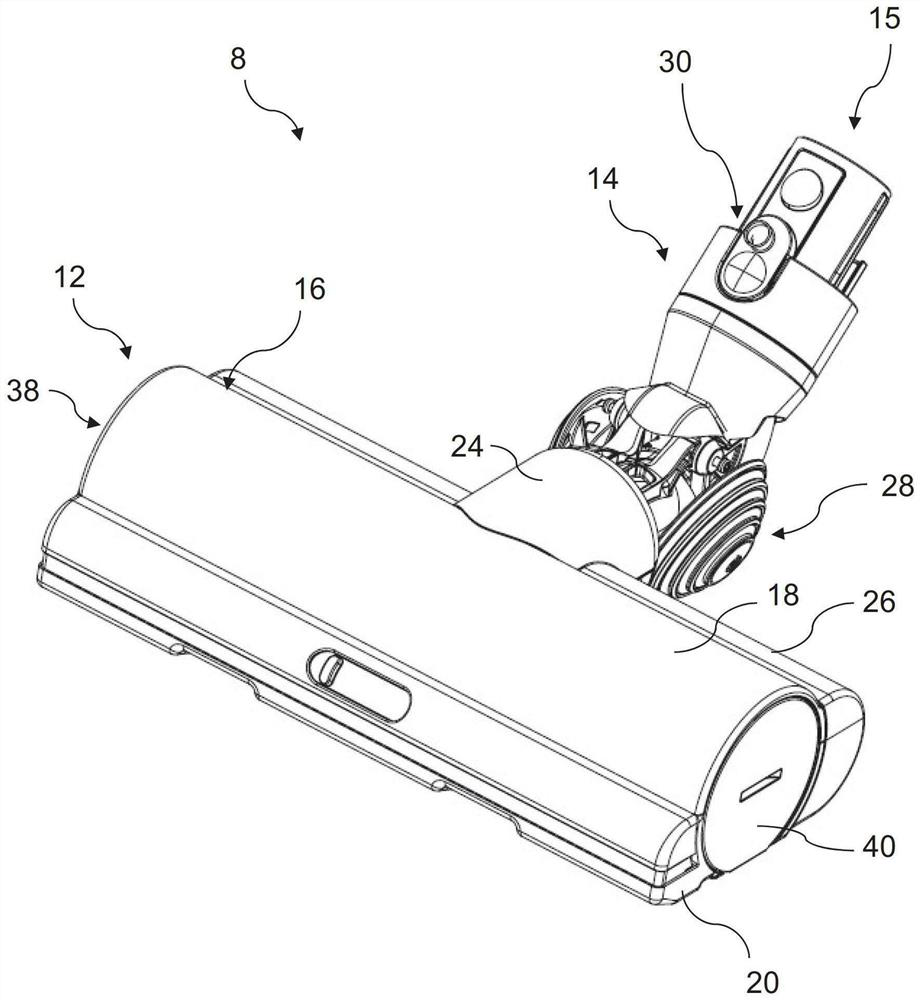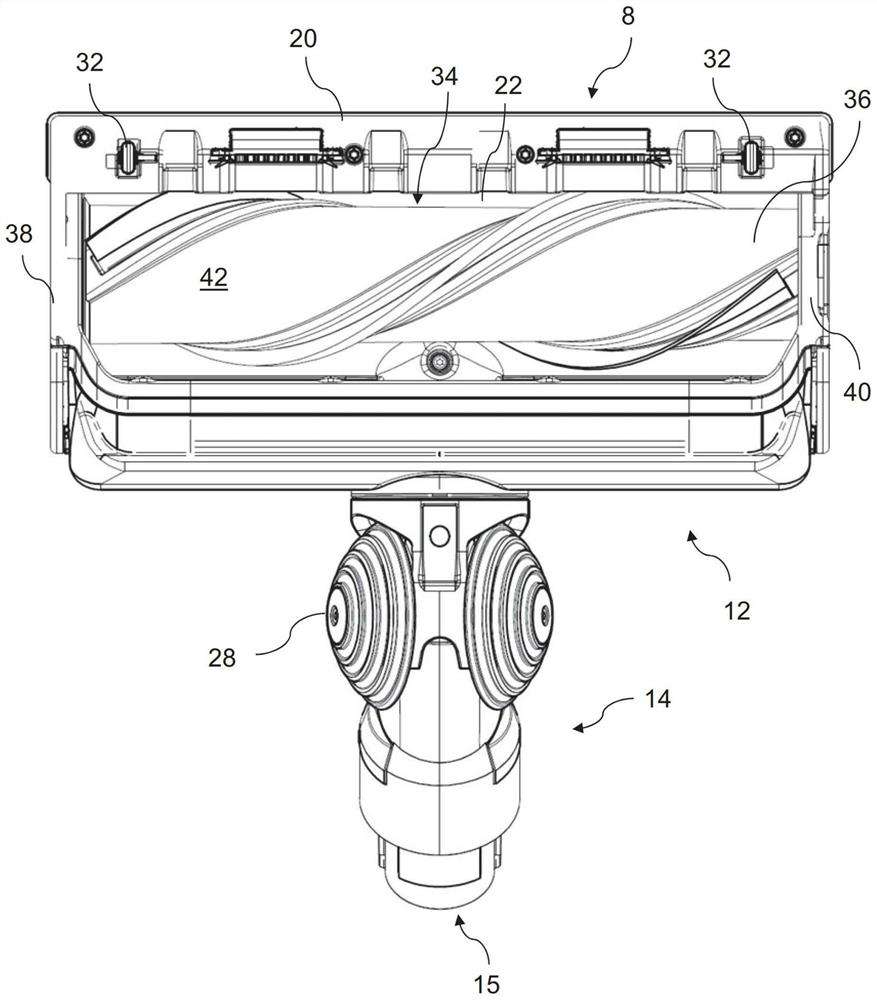Cleaning head for vacuum cleaning appliance
A vacuum cleaning, cleaning head technology, applied in the field of cleaning head or floor tools, rotary driven agitator assembly, which can solve the problem of low flow rate
- Summary
- Abstract
- Description
- Claims
- Application Information
AI Technical Summary
Problems solved by technology
Method used
Image
Examples
Embodiment Construction
[0034] Specific embodiments of the present invention will now be described, in which numerous features will be discussed in detail in order to provide a thorough understanding of the inventive concepts defined in the appended claims. It will be apparent to the reader, however, that the present invention may be practiced without specific details and, in some instances, well-known methods, techniques and structures have not been described in detail in order to avoid unnecessarily obscuring the concepts of the present invention .
[0035] figure 1 A known vacuum cleaning appliance or vacuum cleaner 2 is shown comprising a dirt and dust separation unit 4 , a motor-driven fan unit 6 and a cleaning head 8 . The vacuum cleaner 2 also includes a wand 10 connecting the dirt and dust separating unit 4 and the cleaning head 8 . The motor-driven fan unit 6 draws the dirt-laden air from the surface to be cleaned (eg floor surface) via the cleaning head 8 to the dirt and dust separation u...
PUM
 Login to View More
Login to View More Abstract
Description
Claims
Application Information
 Login to View More
Login to View More - R&D
- Intellectual Property
- Life Sciences
- Materials
- Tech Scout
- Unparalleled Data Quality
- Higher Quality Content
- 60% Fewer Hallucinations
Browse by: Latest US Patents, China's latest patents, Technical Efficacy Thesaurus, Application Domain, Technology Topic, Popular Technical Reports.
© 2025 PatSnap. All rights reserved.Legal|Privacy policy|Modern Slavery Act Transparency Statement|Sitemap|About US| Contact US: help@patsnap.com



